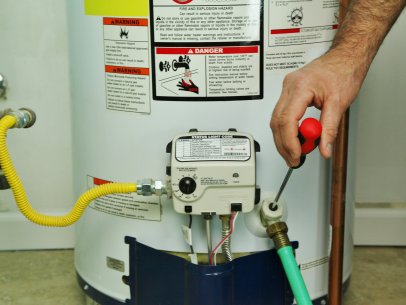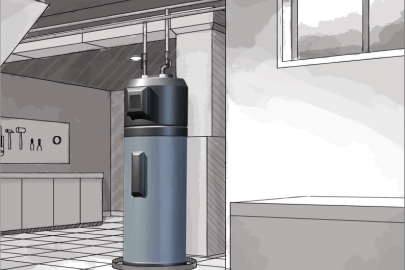Are you trying to find guidance around What Kind of Maintenance Do Water Heaters Need??

Warm water is vital for everyday comfort, whether it's for a rejuvenating shower or washing dishes. To ensure your warm water system runs successfully and lasts much longer, regular maintenance is key. This article provides practical ideas and understandings on exactly how to preserve your home's hot water system to avoid disruptions and expensive repair services.
Introduction
Maintaining your home's hot water system could appear challenging, but with a few easy steps, you can ensure it operates efficiently for several years to find. This guide covers everything from recognizing your warm water system to DIY maintenance tips and recognizing when to employ specialist aid.
Relevance of Preserving Your Hot Water System
Normal maintenance not only extends the life expectancy of your warm water system but likewise guarantees it operates efficiently. Neglecting upkeep can lead to lowered efficiency, greater power expenses, and also premature failure of the system.
Indicators Your Hot Water System Needs Upkeep
Knowing when your warm water system needs attention can protect against major concerns. Watch out for signs such as irregular water temperature, strange sounds from the heater, or rustic water.
Understanding Your Warm Water System
Before diving into upkeep jobs, it's valuable to understand the standard components of your warm water system. Usually, this includes the hot water heater itself, pipelines, anode poles, and temperature controls.
Regular Monthly Upkeep Tasks
Regular regular monthly checks can aid capture minor issues before they escalate.
Purging the Hot Water Heater
Flushing your water heater eliminates debris accumulation, boosting efficiency and extending its life.
Monitoring and Changing Anode Rods
Anode rods avoid rust inside the container. Inspecting and replacing them when broken is vital.
Evaluating and Changing Temperature Level Settings
Changing the temperature level settings makes sure optimum performance and security.
Do It Yourself Tips for Maintenance
You can carry out numerous maintenance tasks on your own to maintain your hot water system in top condition.
Looking for Leakages
Consistently examine pipelines and links for leaks, as these can result in water damages and greater bills.
Evaluating Stress Alleviation Valves
Testing the pressure safety valve ensures it works correctly and protects against excessive pressure build-up.
Shielding Pipes
Protecting warm water pipelines lowers heat loss and can save energy.
When to Call an Expert
While do it yourself upkeep is advantageous, some problems require specialist proficiency.
Complicated Problems Calling For Specialist Aid
Examples include significant leakages, electric problems, or if your water heater is consistently underperforming.
Regular Specialist Maintenance Advantages
Expert maintenance can include extensive assessments, tune-ups, and making certain conformity with safety and security criteria.
Final thought
Routine upkeep of your home's warm water system is crucial for performance, long life, and price financial savings. By adhering to these pointers and recognizing when to seek professional help, you can make certain a trustworthy supply of warm water without unexpected disturbances.
How to Maintain an Instant Hot Water Heater
Before tinkering with your hot water heater, make sure that it’s not powered on. You also have to turn off the main circuit breaker and shut off the main gas line to prevent accidents. Also turn off the water valves connected to your unit to prevent water from flowing into and out of the appliance. 2. When you’re done, you have to detach the purge valves’ caps. These look like the letter “T” and are situated on either side of the water valves. Doing so will release any pressure that has accumulated inside the valves while at the same time avoid hot water from shooting out and burning your skin. 3. When the purge valves’ caps are removed, you have to connect your hosing lines to the valves. Your unit should have come with three hoses but if it didn’t, you can purchase these things from any hardware or home repair shops. You can also get them from retail stores that sell water heating systems. Read the user’s manual and follow it to complete this task properly. When the hosing lines are connected, open the purge port’s valves. 4. You should never use harsh chemical cleaners or solutions when cleaning your unit. Make use of white vinegar instead. It should be undiluted and you’ll probably use about 2 gallons. 5. Now flush your water heater. This task should probably take about 40 minutes. We can’t give you specific directions for this because the procedure is carried out depending on the type, model and brand of your heater. With that being said, refer to the user’s manual. 6. When you’re done draining the unit, you have to turn off the purge port valves again. Remove the hosing lines that you earlier installed on each of the water valves. Put the valve caps (purge port) back in their respective places and be very careful so as not to damage the rubber discs that are found inside these caps. 7. Now that everything’s back in place, check your user’s manual again to find out how to reactivate your water heating system. 8. Once it is working, turn one of your hot water faucets on just to let air pass through the heater’s water supply pipes. Leave the tap on until water flows smoothly out of it. https://www.orrplumbing.com/blog/2014/september/how-to-maintain-an-instant-hot-water-heater/

I am very interested in What Kind of Maintenance Do Water Heaters Need? and I really hope you enjoyed the entire article. Sharing is caring. Helping others is fun. I recognize the value of reading our article about How to Maintain a Hot Water Heater in a Few Simple Steps.
Information
 Emilio Estevez Then & Now!
Emilio Estevez Then & Now! Barret Oliver Then & Now!
Barret Oliver Then & Now! Destiny’s Child Then & Now!
Destiny’s Child Then & Now! Lacey Chabert Then & Now!
Lacey Chabert Then & Now! Nadia Bjorlin Then & Now!
Nadia Bjorlin Then & Now!